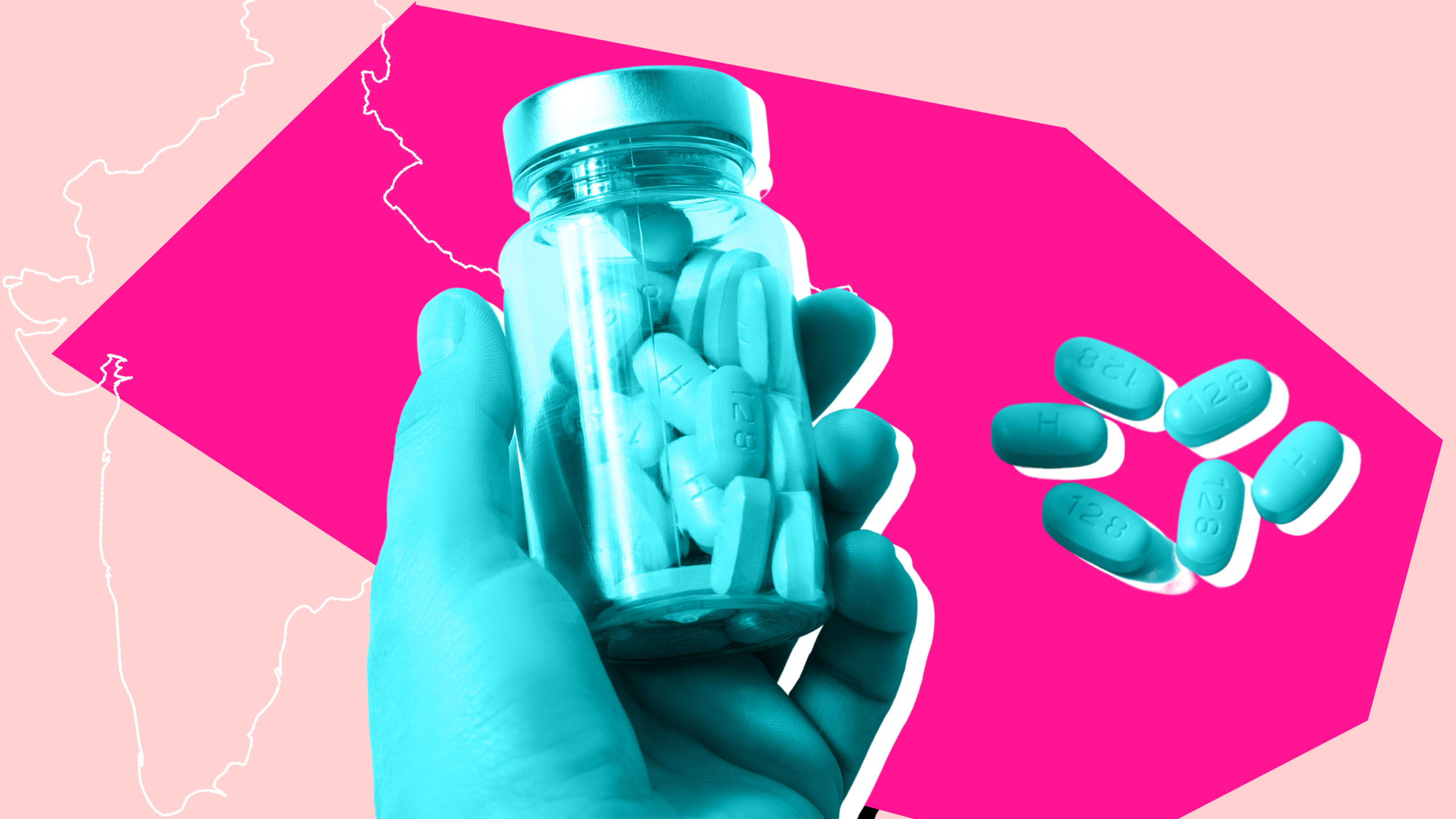Hundreds of thousands of Indians living with HIV are facing a shortage of life-saving antiretroviral medicines, activists say. These are drugs used to slow the rate of HIV replication in the body, also referred to as antiretroviral therapy (ART). For the past month, Indian advocacy groups have been protesting in response to the shortage.
On July 21, activists gathered in New Delhi outside the National AIDS Control Organization (NACO), a federal group in charge of procuring HIV drugs from pharmaceutical firms and distributing them for free public use. They have not left since. The protestors represent the Delhi Network of Positive People (DNP+)—a coalition that aims to improve treatment for Indians living with HIV/AIDS.
India—which is home to 2.3 million people living with HIV—is one of the few countries in the world providing free ART to its residents. NACO oversees the National AIDS Control Programme (NACP), an initiative responsible for tendering and procuring HIV meds. While ART can be purchased through pharmacies in India, the cost is prohibitive for many—so NACP aims to provide the drugs for free to those who otherwise couldn’t afford them.
“Earlier we would get medicine stock for a month or two,” one of the protesters, Hari Shankar, told Scroll. “Now we get medicines for five to ten days. Sometimes there are no medicines at all …”
Another protester, Kedar Nath, has been receiving HIV treatment for the last 13 years, and says the drugs have been crucial for his survival. But the recent shortage has left him so sick he’s unable to work, and he has no savings to fall back on.
“[It] has turned my life upside down,” he told The Guardian.
Nath and Shankar are both amongst the 500,000 Indians the DNP+ says the government is neglecting by not prioritizing life-saving HIV treatments.
This isn’t the first time the country has faced disruptions to its supply of free HIV medication: in 2014 and 2017 there were similar delays in the supply chain.
Dr. Ishwar Gilada, who founded India’s first AIDS clinics, suggested these delays are caused by a bureaucratic procurement process that offers a too-low incentive for companies’ participation.
In an article for The Hindu, activist Loon Gangte similarly blamed a lack of “political will” from politicians.
Whilst lauding the government’s success in providing HIV treatment he also acknowledged there’s still headway to be made. “While there has been a reduction in AIDS-related deaths since 2004, progress has stalled in recent years, highlighting the need to address health system challenges such as disruptions in the medicine supply chain to end AIDS.”
India’s ministry of health, for its part, has denied the shortage, claiming that NACO has reviewed its current stock and considers it to be at an adequate level.
One of the drugs in shortage is Dolutegravir, which NACO considers the gold standard for HIV treatment. Due to the shortage, some patients who usually rely on Dolutegravir have been instead taking a higher number of lower-dosage tablets usually given to children. This could eventually deprive children living with HIV of medicine they need, as treatments used for children have also experienced recent shortages.
One of the primary concerns over the shortages is that people living with HIV will miss their doses and thus become drug-resistant. When a patient living with HIV becomes resistant to their regimen, ART becomes less effective and the patient becomes susceptible to life-threatening fungal and bacterial infections.
This is why doctors and the activists protesting outside NACO are demanding the government step up. Beyond just rectifying the current shortage, the groups are also calling for a more sustained approach to procuring essential medicines in the future.


 Why you can trust Xtra
Why you can trust Xtra


